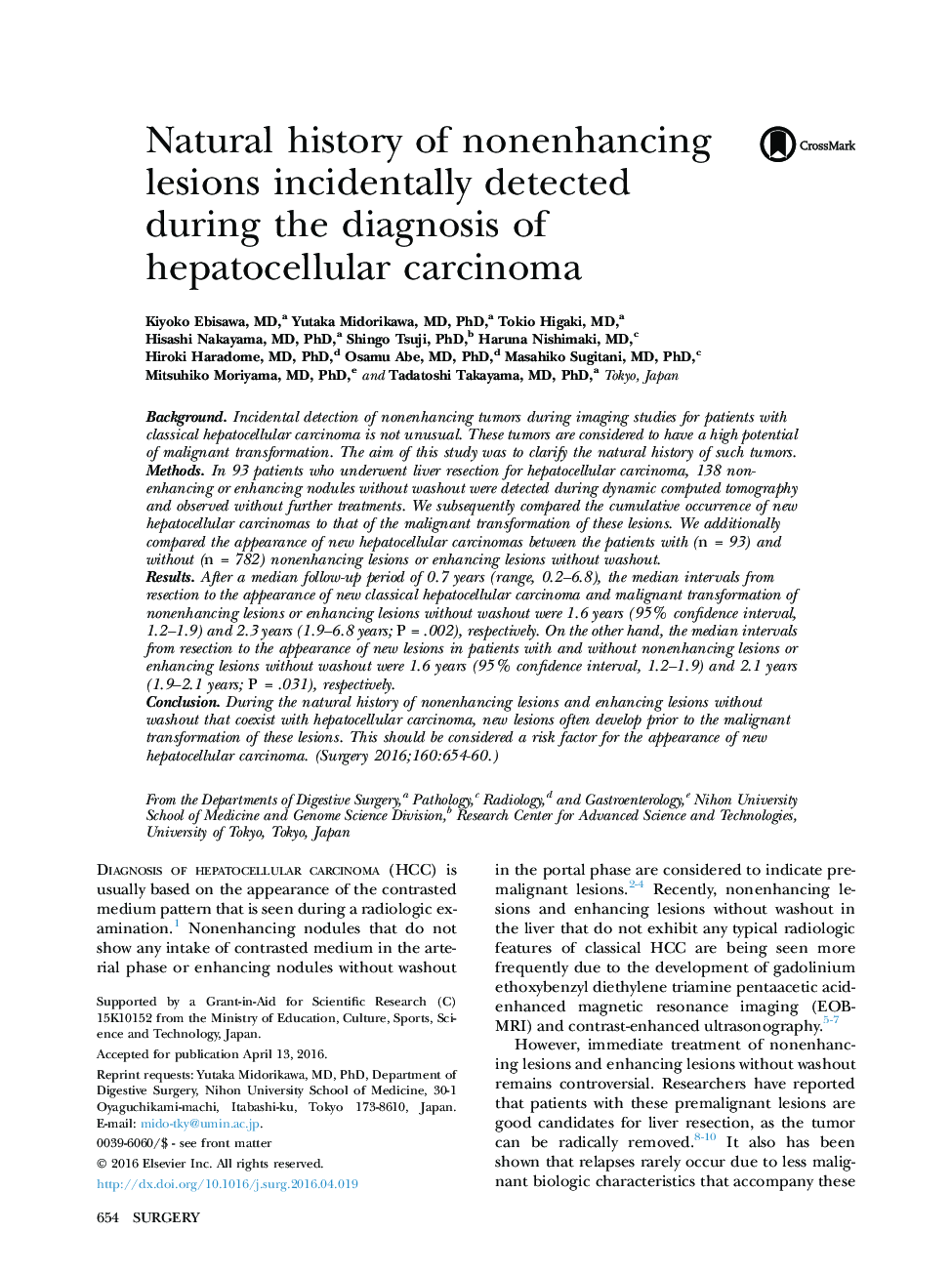| Article ID | Journal | Published Year | Pages | File Type |
|---|---|---|---|---|
| 6254874 | Surgery | 2016 | 7 Pages |
BackgroundIncidental detection of nonenhancing tumors during imaging studies for patients with classical hepatocellular carcinoma is not unusual. These tumors are considered to have a high potential of malignant transformation. The aim of this study was to clarify the natural history of such tumors.MethodsIn 93 patients who underwent liver resection for hepatocellular carcinoma, 138 nonenhancing or enhancing nodules without washout were detected during dynamic computed tomography and observed without further treatments. We subsequently compared the cumulative occurrence of new hepatocellular carcinomas to that of the malignant transformation of these lesions. We additionally compared the appearance of new hepatocellular carcinomas between the patients with (n = 93) and without (n = 782) nonenhancing lesions or enhancing lesions without washout.ResultsAfter a median follow-up period of 0.7Â years (range, 0.2-6.8), the median intervals from resection to the appearance of new classical hepatocellular carcinoma and malignant transformation of nonenhancing lesions or enhancing lesions without washout were 1.6Â years (95% confidence interval, 1.2-1.9) and 2.3Â years (1.9-6.8Â years; P = .002), respectively. On the other hand, the median intervals from resection to the appearance of new lesions in patients with and without nonenhancing lesions or enhancing lesions without washout were 1.6Â years (95% confidence interval, 1.2-1.9) and 2.1Â years (1.9-2.1Â years; P = .031), respectively.ConclusionDuring the natural history of nonenhancing lesions and enhancing lesions without washout that coexist with hepatocellular carcinoma, new lesions often develop prior to the malignant transformation of these lesions. This should be considered a risk factor for the appearance of new hepatocellular carcinoma.
